 W
WAchatinella apexfulva is a reportedly extinct species of colorful, tropical, arboreal pulmonate land snail in the family Achatinellidae, once present on Oahu, Hawaii. A. apexfulva is the type species of the genus Achatinella. The specific name, apexfulva, meaning "yellow-tipped", refers to the yellow tip of the snail's shell.
 W
WAchatinella bellula is a species of air-breathing land snail, a terrestrial pulmonate gastropod mollusk in the family Achatinellidae. This species is endemic to the Hawaiian island of Oahu in the United States. No more than five specimens have been observed since 1979.
 W
WAchatinella bulimoides is a species of air-breathing land snail, a terrestrial pulmonate gastropod mollusk in the family Achatinellidae. This species is endemic to Hawaii.
 W
WAchatinella byronii is a species of air-breathing land snail, a terrestrial pulmonate gastropod mollusk in the family Achatinellidae. This species is endemic to Oahu, in the Hawaiian Islands.
 W
WAchatinella curta is a species of air-breathing land snail, a terrestrial pulmonate gastropod mollusk in the family Achatinellidae. This species is endemic to the Hawaiian Islands.
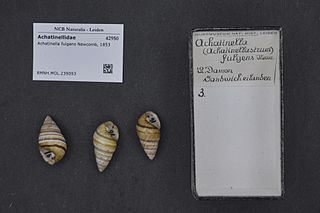 W
WAchatinella fulgens is a species of air-breathing land snail, a terrestrial pulmonate gastropod mollusk in the family Achatinellidae. This species is endemic to Hawaii.
 W
WAchatinella fuscobasis is a species of air-breathing land snail, a terrestrial pulmonate gastropod in the family Achatinellidae. This species is endemic to Hawaii.
 W
WAchatinella lila is a species of air-breathing land snail, a terrestrial pulmonate gastropod mollusk in the family Achatinellidae. This species is endemic to the northern Ko‘olau Mountains, Oahu.
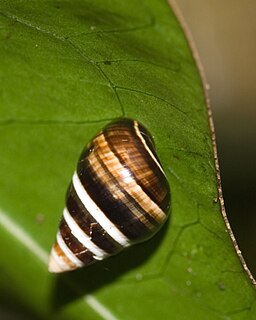 W
WAchatinella mustelina is a species of air-breathing land snail, a terrestrial pulmonate gastropod mollusc in the family Achatinellidae. This species is endemic to the Waianae Range of the island of Oahu, Hawaii.
 W
WAchatinella pulcherrima is a species of air-breathing land snail, a terrestrial pulmonate gastropod mollusk in the family Achatinellidae. This species is endemic to the island of Oahu in Hawaii.
 W
WAchatinella stewartii is a species of air-breathing land snail, a terrestrial pulmonate gastropod mollusk in the family Achatinellidae. This species is endemic to Hawaii.
 W
WAchatinella swiftii is a species of air-breathing land snail, a terrestrial pulmonate gastropod mollusk in the family Achatinellidae. This species is endemic to Hawaii.
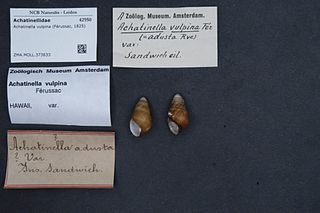 W
WAchatinella vulpina is a species of air-breathing land snail, a terrestrial pulmonate gastropod mollusk in the family Achatinellidae. This species is endemic to Hawaii.
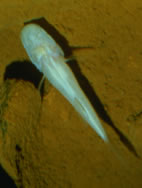 W
WThe Alabama cavefish is a critically endangered species of amblyopsid cavefish found only in underground pools in Key Cave, located in northwestern Alabama, United States in the Key Cave National Wildlife Refuge. It was discovered underneath a colony of gray bats in 1967 by researchers Robert A. Kuehne and John E. Cooper and scientifically described in 1974.
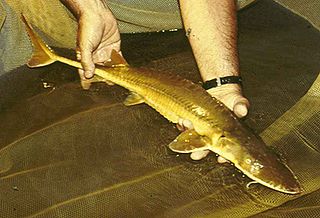 W
WThe Alabama sturgeon, Scaphirhynchus suttkusi, is a species of sturgeon native to the United States of America and now only believed to exist in 130 miles (210 km) of the lower Alabama River. The fish has a distinctive yellowish-orange color, grows to a size of about 30 in (76 cm) long and 2 to 3 lb (0.9–1.4 kg), and is believed to have a lifespan of 12 to 20 years. Biologists have known of the fish since the 1950s or 1960s, but the large diversity of aquatic species in Alabama prevented formal identification until 1991.
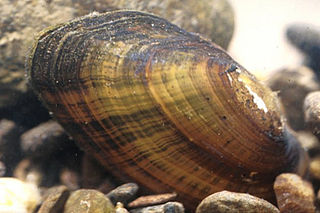 W
WThe Appalachian elktoe is a species of freshwater mussel in the family Unionidae, the river mussels. It is native to the United States, where it is known only from North Carolina and Tennessee.
 W
WAnolis roosevelti, also known commonly as Roosevelt's giant anole or the Culebra Island giant anole, is an extremely rare or possibly extinct species of lizard of the genus Anolis in the family Dactyloidae. The species is native to the Antilles.
 W
WThe Appalachian elktoe is a species of freshwater mussel in the family Unionidae, the river mussels. It is native to the United States, where it is known only from North Carolina and Tennessee.
 W
WThe bog turtle is a critically endangered species of semiaquatic turtle in the family Emydidae. The species is endemic to the eastern United States. It was first scientifically described in 1801 after an 18th-century survey of Pennsylvania. The smallest North American turtle, its carapace measures about 10 centimeters (4 in) long when fully grown. Although the bog turtle is similar in appearance to the painted or spotted turtles, its closest relative is actually the somewhat larger wood turtle. The bog turtle can be found from Vermont in the north, south to Georgia, and west to Ohio. Diurnal and secretive, it spends most of its time buried in mud and – during the winter months – in hibernation. The bog turtle is omnivorous, feeding mainly on small invertebrates. The bog turtle is the state reptile of New Jersey.
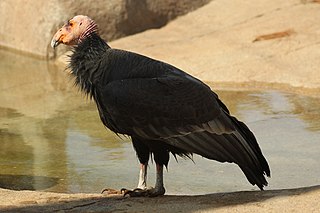 W
WThe California condor is a New World vulture, and the largest North American land bird. It became extinct in the wild in 1987, but has since been reintroduced to northern Arizona and southern Utah, the coastal mountains of central and southern California, and northern Baja California. Although four other fossil members are known, it is the only surviving member of the genus Gymnogyps. The species is listed by the IUCN as critically endangered.
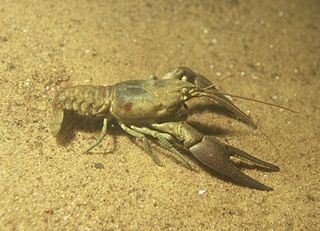 W
WCambarus aculabrum is a rare species of crayfish known by the common name Benton cave crayfish. It is native to Arkansas in the United States, where it is known from only four locations. It is a federally listed endangered species of the United States.
 W
WThe Carolina heelsplitter is a species of freshwater mussel, an aquatic bivalve mollusk in the family Unionidae.
 W
WThe June sucker is an endangered species of fish endemic to Utah Lake and the Provo River in the U.S. state of Utah. It is a gray or brownish fish with a paler belly, growing up to about 24 in (61 cm). It lives alongside the Utah sucker, which has a much wider range, and because the populations of both fish having been much reduced by fishing, other species such as the common carp have been introduced into the lake. As a result, the June sucker has become "critically endangered" as the pure species is lost as a result of hybridization with the Utah sucker, and predatory fish feed on its larvae. Conservation measures have been put in place and fish are being raised in a fish hatchery for reintroduction.
 W
WCicindela albissima, commonly called the Coral Pink Sand Dunes tiger beetle is a species of tiger beetle endemic to Coral Pink Sand Dunes State Park in southern Utah, United States. It was originally described by Rumpp in 1962 as the subspecies Cicindela limbata albissima, but mitochondrial DNA, along with the species' morphological and geographical distinctiveness, have shown that it is a separate species. C. albissima can be distinguished from other Cicindela species by its restricted range and lack of pigmentation on its elytra.
 W
WThe Anegada ground iguana or stout iguana is a critically endangered species of lizard of the genus Cyclura belonging to the family Iguanidae. The species can be found exclusively in the islands of Anegada and Guana. Historically, it inhabited the islands of Puerto Rico and Saint Thomas, however, the animal's original range has been greatly diminished.
 W
WThe Devils Hole pupfish is a critically endangered species of the family Cyprinodontidae (pupfishes) found only in Devils Hole, a water-filled cavern in the US state of Nevada. It was first described as a species in 1930 and is most closely related to C. nevadensis and the Death Valley pupfish. The age of the species is unknown, with differing analyses offering ranges between one thousand and sixty thousand years. It is a small fish, with maximum lengths of up to 30 mm (1.2 in). Individuals vary in coloration based on age and sex: males are bright metallic blue while females and juveniles are more yellow. A defining trait of this species its lack of pelvic fins. The pupfish consume nearly every available food resource at Devils Hole, including beetles, snails, algae, and freshwater crustaceans, with diet varying throughout the year. It is preyed on by the predaceous diving beetle species Neoclypeodytes cinctellus, which was first observed in Devils Hole in 1999 or 2000. Reproduction occurs year-round, with spikes in the spring and fall. Females produce few eggs, though, and the survivorship from egg to adult is low. Individuals live 10–14 months.
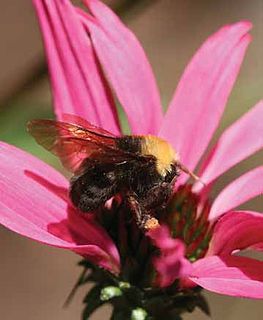 W
WFranklin's bumblebee is known to be one of the most narrowly distributed bumblebee species, making it a critically endangered bee of the western United States. It is known only from a 190-by-70-mile area in southern Oregon and northern California, between the Coast and Sierra-Cascade mountain ranges. It was last seen in 2006. Franklin's bumblebee is known to collect nectar and pollen from several wildflowers, such as lupine, California poppy, and horsemint, which causes it to be classified as a generalist forager.
 W
WGammarus desperatus is a species of amphipod crustacean in the family Gammaridae.
 W
WThe June sucker is an endangered species of fish endemic to Utah Lake and the Provo River in the U.S. state of Utah. It is a gray or brownish fish with a paler belly, growing up to about 24 in (61 cm). It lives alongside the Utah sucker, which has a much wider range, and because the populations of both fish having been much reduced by fishing, other species such as the common carp have been introduced into the lake. As a result, the June sucker has become "critically endangered" as the pure species is lost as a result of hybridization with the Utah sucker, and predatory fish feed on its larvae. Conservation measures have been put in place and fish are being raised in a fish hatchery for reintroduction.
 W
WThe Louisiana pearlshell, Margaritifera hembeli, is a rare species of bivalve mollusk in the family Margaritiferidae. This freshwater mussel is native to Louisiana in the United States, and was previously present also in Arkansas. It grows to a length of about 10 cm (4 in) and lives on the sand or gravel stream-bed in riffles and fast flowing stretches of small streams. Its life cycle involves a stage where it lives parasitically inside a fish. This mollusk is sensitive to increased sedimentation and cannot tolerate impoundments. Because of its limited range and its population decline, the International Union for Conservation of Nature has rated this mollusk as being "critically endangered".
 W
WMedionidus penicillatus, the gulf moccasinshell, is a rare species of freshwater mussel in the family Unionidae, the river mussels. This aquatic bivalve mollusk is native to Alabama, Florida, and Georgia in the United States, where it is in decline and has been extirpated from most of the rivers it once inhabited. It is a federally listed endangered species of the United States.
 W
WThe Miami blue is a small butterfly that is native to coastal areas of southern Florida. It is a subspecies of Thomas's blue. Once common throughout its range, it has become critically endangered. Its numbers have recently been increased by a captive breeding program at the Florida Museum of Natural History.
 W
WThe Mississippi gopher frog, also known commonly as the dark gopher frog, the dusky gopher frog, and the St. Tammany gopher frog, is a critically endangered species of frog in the family Ranidae. The species is endemic to the southern United States. Its natural habitats are temperate coastal forests and intermittent freshwater marshes. This secretive frog is on average 3 in (8 cm) long, with a dark brown or black dorsal surface covered in warts.
 W
WThe moapa dace is a rare cyprinid fish of southern Nevada, United States, found only in the warm springs that give rise to the Muddy River, and in the upper parts of the river. It is the only species of the monotypic genus Moapa.
 W
WNicrophorus americanus, also known as the American burying beetle or giant carrion beetle, is a critically endangered species of beetle endemic to North America. It belongs to the order Coleoptera and the family Silphidae. The carrion beetle in North America is carnivorous, feeds on carrion and requires carrion to breed. It is also a member of one of the few genera of beetle to exhibit parental care. The decline of the American burying beetle has been attributed to habitat loss, alteration, and degradation, and they now occur in less than 10% of their historic range.
 W
WSamoana fragilis is a species of tropical, air-breathing land snail, a terrestrial, pulmonate, gastropod mollusk in the family Partulidae. This species is known by the common name Fragile Tree snail and endemic to Guam and island Rota.
 W
WThe southern pigtoe is a species of freshwater mussel, an aquatic bivalve mollusk in the family Unionidae, the river mussels.
 W
WTheliderma metanevra, common name the monkeyface, is a species of freshwater mussel, an aquatic bivalve mollusk in the family Unionidae, the river mussels.
 W
WTheliderma sparsa, the Appalachian monkey-face pearly mussel or Appalachian monkeyface, is a species of freshwater mussel, an aquatic bivalve mollusk in the family Unionidae, the river mussels.
 W
WTheliderma tuberosa, the rough rockshell, is a species of freshwater mussel. It is an aquatic bivalve mollusk in the family Unionidae, the river mussels. It has sometimes been treated as a variety or big-river ecotype of Theliderma metanevra, due to only having slight shell differences.
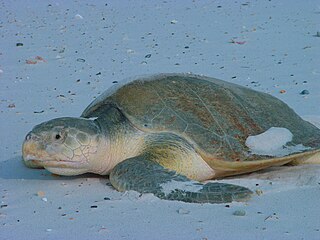 W
WKemp's ridley sea turtle, also called the Atlantic ridley sea turtle, is the rarest species of sea turtle and is critically endangered. It is one of two living species in the genus Lepidochelys.
 W
WThe winged mapleleaf, also known as false mapleleaf, or hickory nut shell, and with the scientific name Quadrula fragosa, is a species of freshwater mussel. It is an aquatic bivalve mollusk in the family Unionidae, the river mussels. It is endemic to the United States.